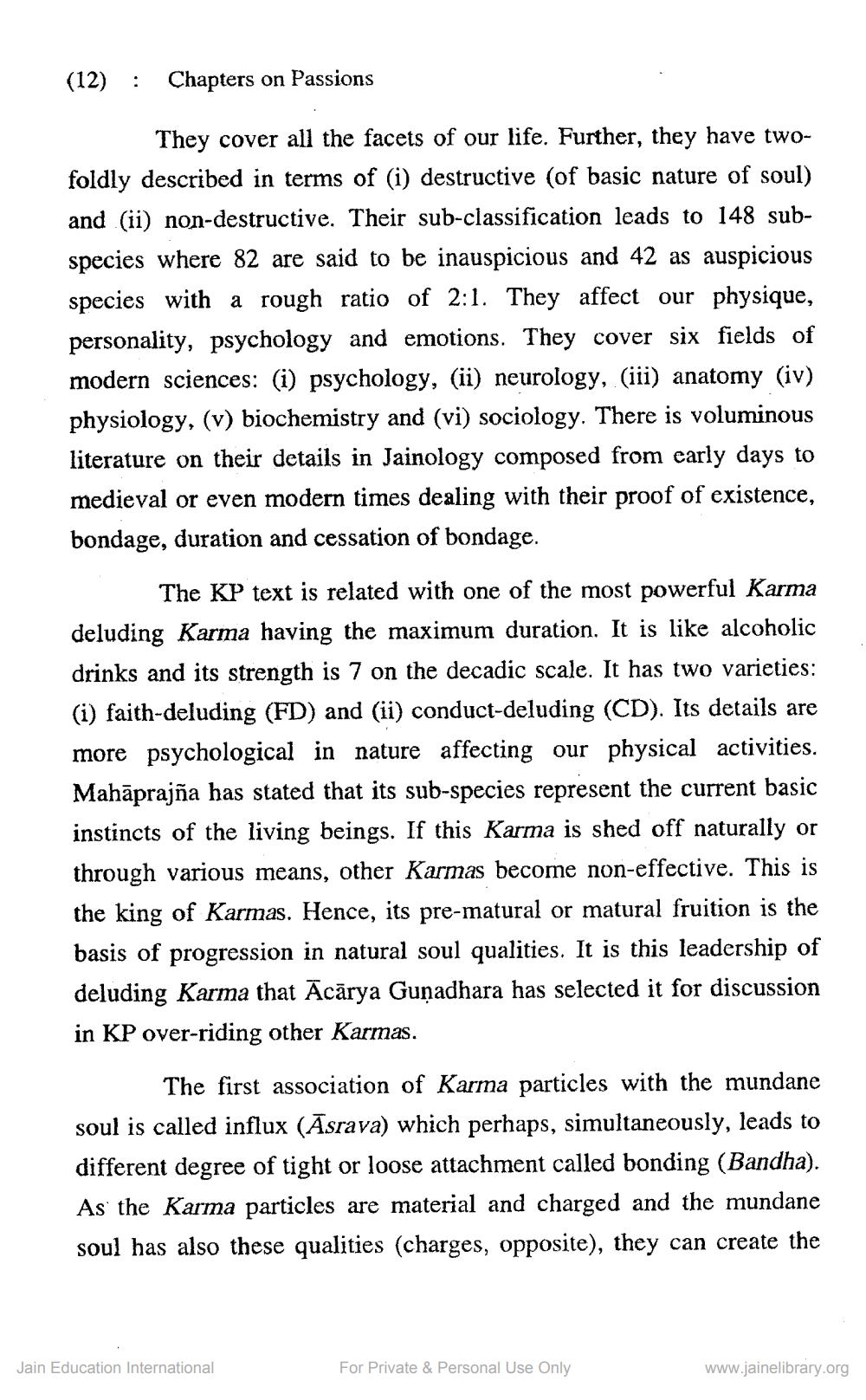________________
(12) : Chapters on Passions
They cover all the facets of our life. Further, they have twofoldly described in terms of (i) destructive (of basic nature of soul) and (ii) non-destructive. Their sub-classification leads to 148 subspecies where 82 are said to be inauspicious and 42 as auspicious species with a rough ratio of 2:1. They affect our physique, personality, psychology and emotions. They cover six fields of modern sciences: (i) psychology, (ii) neurology, (iii) anatomy (iv) physiology, (v) biochemistry and (vi) sociology. There is voluminous literature on their details in Jainology composed from early days to medieval or even modern times dealing with their proof of existence, bondage, duration and cessation of bondage.
The KP text is related with one of the most powerful Karma deluding Karma having the maximum duration. It is like alcoholic drinks and its strength is 7 on the decadic scale. It has two varieties: (i) faith-deluding (FD) and (ii) conduct-deluding (CD). Its details are more psychological in nature affecting our physical activities. Mahāprajña has stated that its sub-species represent the current basic instincts of the living beings. If this Karma is shed off naturally or through various means, other Karmas become non-effective. This is the king of Karmas. Hence, its pre-matural or matural fruition is the basis of progression in natural soul qualities. It is this leadership of deluding Karma that Ācārya Gunadhara has selected it for discussion in KP over-riding other Karmas.
The first association of Karma particles with the mundane soul is called influx (Asrava) which perhaps, simultaneously, leads to different degree of tight or loose attachment called bonding (Bandha). As the Karma particles are material and charged and the mundane soul has also these qualities (charges, opposite), they can create the
Jain Education International
For Private & Personal Use Only
www.jainelibrary.org




